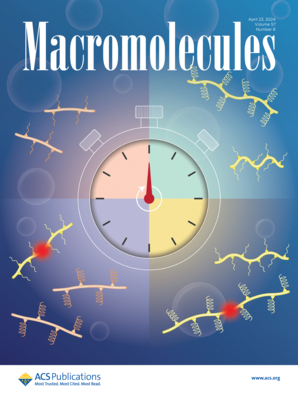Molecular Models of Nanoplastics from Semi-Crystalline Polyethylene
IF 5.1
1区 化学
Q1 POLYMER SCIENCE
引用次数: 0
Abstract
Molecular models for nanosized polar crystalline fragments generated during the degradation of semicrystalline polyethylene (PE), suitable for hybrid-particle field molecular dynamics, are proposed. These models provide detailed thermodynamic and structural characterization of the agglomeration of fragments constituting nanoplastics in aqueous media. Effects of aging and environmental conditions in terms of surface chemistry, pH, and counterion valence of the models are studied. In particular, the colloidal stability of fragment pairs in water has been investigated by calculating free energy as a function of interfragment distance using the thermodynamic integration technique. The behaviors obtained are in line with experimental literature. Large-scale MD simulations of multifragment systems in water show spontaneous self-assembly for all considered fragment models. Due to their molecular resolution and computational efficiency, the proposed models are able to include detailed representations of environmentally relevant systems, paving the way to a molecular understanding of the behavior of nanoplastics from semicrystalline polymers in the environment.

求助全文
约1分钟内获得全文
求助全文
来源期刊

Macromolecules
工程技术-高分子科学
CiteScore
9.30
自引率
16.40%
发文量
942
审稿时长
2 months
期刊介绍:
Macromolecules publishes original, fundamental, and impactful research on all aspects of polymer science. Topics of interest include synthesis (e.g., controlled polymerizations, polymerization catalysis, post polymerization modification, new monomer structures and polymer architectures, and polymerization mechanisms/kinetics analysis); phase behavior, thermodynamics, dynamic, and ordering/disordering phenomena (e.g., self-assembly, gelation, crystallization, solution/melt/solid-state characteristics); structure and properties (e.g., mechanical and rheological properties, surface/interfacial characteristics, electronic and transport properties); new state of the art characterization (e.g., spectroscopy, scattering, microscopy, rheology), simulation (e.g., Monte Carlo, molecular dynamics, multi-scale/coarse-grained modeling), and theoretical methods. Renewable/sustainable polymers, polymer networks, responsive polymers, electro-, magneto- and opto-active macromolecules, inorganic polymers, charge-transporting polymers (ion-containing, semiconducting, and conducting), nanostructured polymers, and polymer composites are also of interest. Typical papers published in Macromolecules showcase important and innovative concepts, experimental methods/observations, and theoretical/computational approaches that demonstrate a fundamental advance in the understanding of polymers.
 求助内容:
求助内容: 应助结果提醒方式:
应助结果提醒方式:


